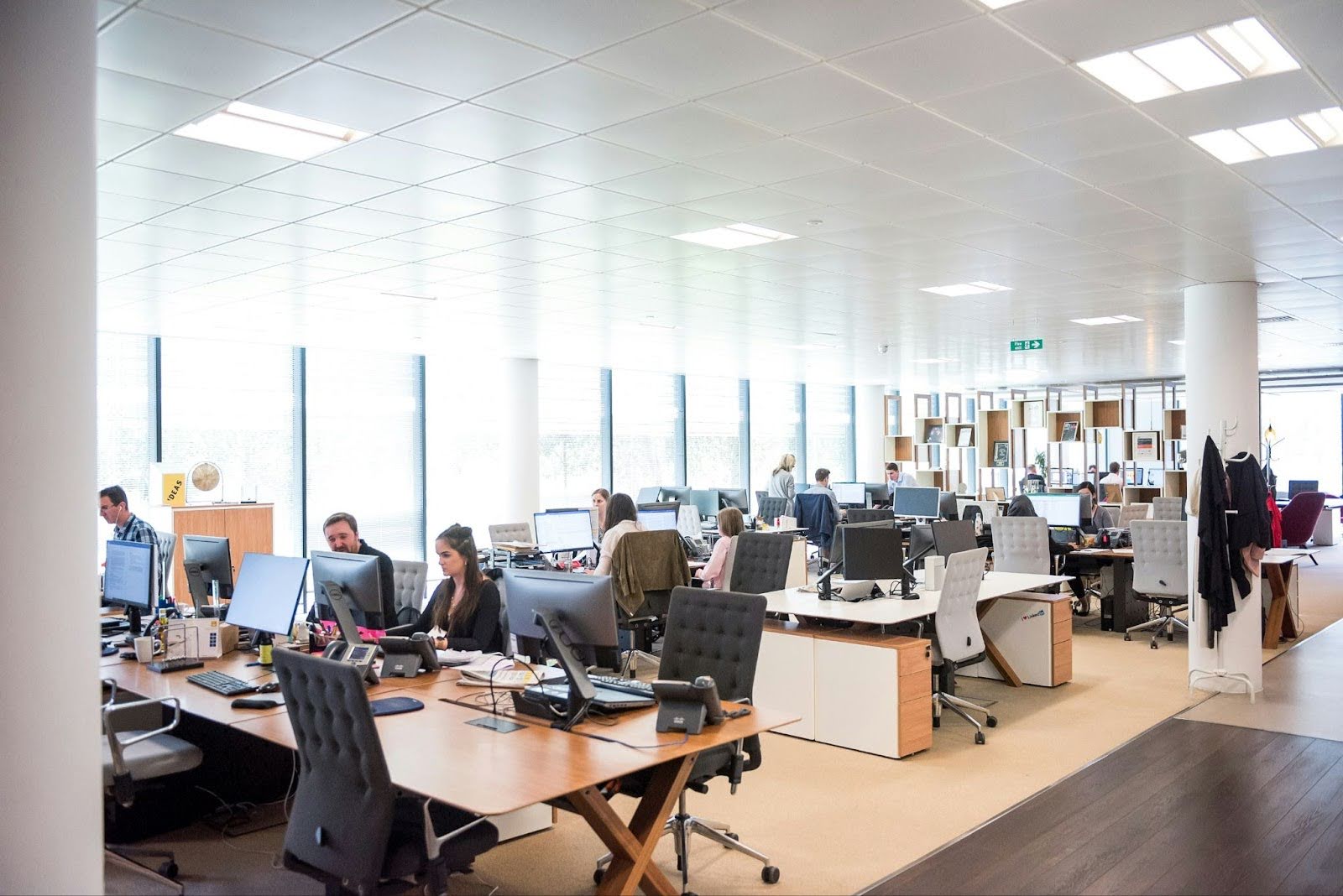Structured Flexibility: The Key to Productive Autonomy
Flexibility in the workplace isn’t chaos—it’s intentional autonomy that boosts productivity and engagement when managed well.
- Core principle: Structured flexibility balances employee choice with clear expectations (e.g., core hours, accountability tools).
- Why it works: Employees perform better when trusted to work where/how they’re most productive (backed by research).
- Tech-enabled: Tools like Slack, Miro, and Officely maintain collaboration and visibility across remote/hybrid teams.
- Mutual responsibility: Freedom requires accountability—regular check-ins and goal-tracking ensure results.
- Future-proof: Companies blending flexibility with structure attract talent and foster innovation without sacrificing cohesion.
New Office Management Handbook for Flexible Workplaces
Packed with actual experts insights and pro tips, this guide is here to help you find out all about managing a flexible office!
Send me the eBook nowDemystifying Flexibility: Choice, Not Chance
Flexibility in the workspace isn’t about leaving things to fate; it’s about empowering choices.
Multiple research studies underline a singular truth: when employees are given the autonomy to choose their work environment, their engagement and productivity levels soar. This isn’t about unsupervised freedom; it’s structured autonomy, built on trust.
“Adopting flexible work at our organization wasn’t about throwing the rulebook out the window. It was about rewriting it together. My personal productivity peaks between 10 AM and 6 PM, and I’ve tailored my day around that.”
Sam D., Developer.
Setting Boundaries: The Framework of Flexibility
But freedom without boundaries is a recipe for chaos. That’s why successful flexibility is built on a foundation of clear guidelines and expectations.
Successful companies often delineate ‘core hours’ for collaborative tasks or empower team managers to be able to pull everyone into the office for team building and collaboration. By offering a combination of freedom and structure, organizations ensure a harmonious balance between individual needs and team cohesion.
Designing a “Flexibility Charter” can be a great way for organizations to outline the do’s and don’ts of flexible working, ensuring everyone is on the same page.
The Two-Way Street: Empowerment and Responsibility
With the freedom of choice comes the onus of responsibility on your employees. Flexibility shines when it is backed by accountability.
It’s not just about where you work but how effectively you do so. Clear objectives, regular check-ins, and transparent communication are pivotal. Tools that offer visibility into tasks and timelines become invaluable in such setups.
Platforms like Asana or Trello provide transparent tracking of tasks and milestones. They’re not just accountability tools but also mediums to celebrate team achievements.
Technology: The Unseen Bridge of Flexibility
While flexibility is about people and choices, technology is the silent enabler, making it all possible without a hitch.
Today’s digital tools facilitate communication, collaboration, and camaraderie, ensuring that physical distance doesn’t translate into professional disconnect. They replicate the office’s collaborative spirit in the virtual realm.
“Our design team is spread over four continents. Yet, with the right tech stack, brainstorming feels as interactive and spontaneous as if we were in the same room.”
Miguel V., Design Lead.
Embrace tools like Slack for communication, Miro for brainstorming, Zoom for face-to-face interactions, and of course, Officely for working location visibility. These tools don’t replace the office; they extend its boundaries.
Structured Flexibility - The Future’s Blueprint
The journey from traditional workspaces to a flexible model isn’t about discarding the old but refining it. By blending choice with structure, organizations are not just adopting a trend; they’re architecting the future of work.
Up next: Why Office Mandates Don’t Work
Frequently Asked Questions
1. What is structured flexibility in the workplace?
Structured flexibility is a work model that combines employee autonomy with clear guidelines, such as core collaboration hours or measurable outcomes, ensuring productivity without rigid office mandates.
2. How does flexibility improve productivity?
Research shows that employees perform better when trusted to choose their optimal work environment and schedule, reducing burnout and increasing engagement.
3. What tools support a flexible work model?
Collaboration platforms like Slack (communication), Miro (virtual whiteboarding), and Officely (hybrid workspace management) maintain visibility and teamwork across remote/hybrid teams.
4. Does flexibility mean no accountability?
No. Structured flexibility requires mutual responsibility—regular check-ins, goal tracking, and outcome-based performance metrics ensure productivity without micromanagement.
5. Why do companies resist flexible work policies?
Misconceptions that flexibility equals chaos or lost control. In reality, structured flexibility *enhances* accountability while accommodating diverse work styles.
6. How can companies transition to structured flexibility?
Start with pilot programs, define core collaboration hours, invest in async/remote-friendly tools, and train managers to lead by outcomes—not presence.
7. Which industries benefit most from structured flexibility?
Knowledge workers (tech, marketing, consulting), creative fields, and global teams see the highest gains, but any role with measurable outputs can thrive.
Try Officely Today
See who's in the office, organise socials and events, and increase your office attendance all within Slack.







.jpg)
.jpg)




.svg)